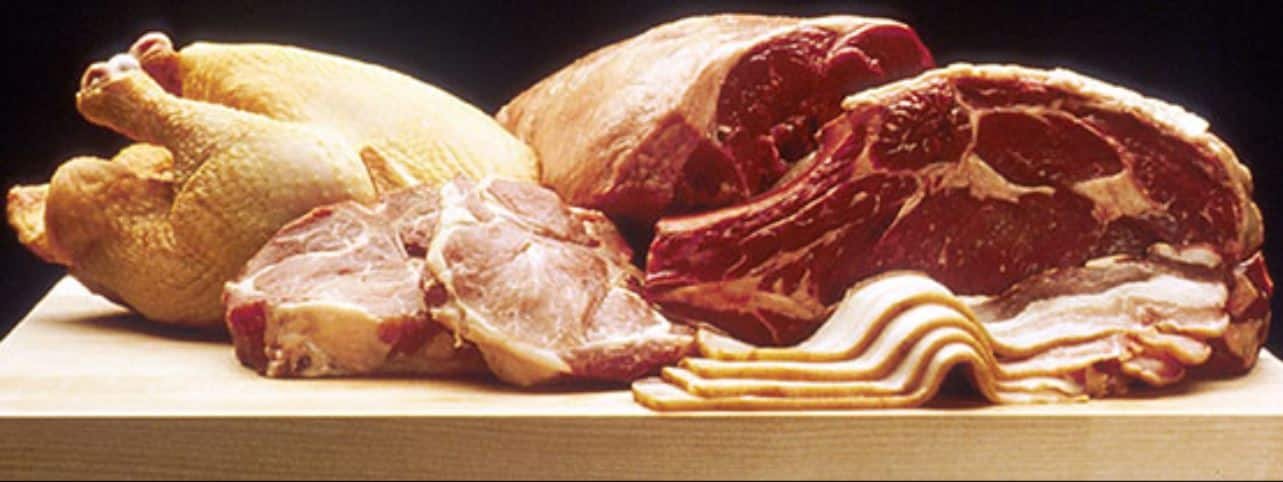Food
Lamb Meat vs. Chicken? Which One Should You Get?

With many different types of meat available in the market, choosing the right one for your routine diet can be a bit of a nuisance. In this post, we will tell you the major differences between lamb meat and chicken to make you decide easily which one is better for you.
Lamb Meat vs. Chicken:
Below is a list of the major differences between the meat of a lamb and chicken. For all of the content calculations below, we have taken lamb meat as trimmed to ¼” fat.
Type of meat:
Lamb meat is considered red meat, while chicken is considered to be white meat. White meat has fewer amounts of myoglobin as compared to red meat. Myoglobin is a protein that gives the meat its color, and that’s why red meat is darker in color as compared to white meat.
Calories:
Although the calories may change depending on the way you cook your meat, here is a general overview to give you an idea about the calories present in both types of meat. Chicken typically has 239 calories/100 grams, while lamb has 267 calories/100 grams. This means that if you want to lose some weight, chicken is the one that you should go for as it has lesser calories as compared to lamb.
Fat:
Choosing the fat content in your diet is very important, especially to people who have heart problems as larger quantities of fat pose a risk of heart diseases. Chicken has low levels of fat with only 14 grams/100 grams of chicken amongst which 3.8 grams is saturated fat. Lamb, on the other hand, has 21 grams of fat/100 grams of lamb meat with 9 grams of saturated fat. Higher quantities of saturated fat are extremely dangerous as they increase the amount of LDL Cholesterol in our blood, putting us at the risk of heart attack and other such diseases.
Proteins:
Our body needs proteins to help us grow, repair and make new cells, and regenerate the body’s tissues and different organs. Protein-rich diets are especially important for young children who are growing up and pregnant women. In chicken, we have 27 grams of protein/100 grams of chicken, while we have 17 grams of protein for every 100 grams of lamb meat.
Carbohydrates:
The main energy source for our body’s everyday activities (both internally and externally) is carbohydrates, and that’s why they are really important to be a significant part of our diet. But both the chicken and lamb meat is considered carbohydrate-free as they don’t have any carbohydrate content in them.
Vitamins and Minerals:
Both vitamins and minerals are an essential part of the nutrients required by our body. They perform various tasks and help many functions of the body, like the healing of wounds. Chicken provides us with a relatively good quantity of Vitamin B-6 and a little of Vitamin A, while lamb meat provides a very less quantity of Vitamin B-6. As for the minerals, both the lamb meat and chicken provides us with Iron, Calcium, Magnesium, Sodium, and Potassium. Lamb meat has greater quantities of Iron and Potassium as compared to chicken.
Now that you are aware of the major nutritional differences between chicken and lamb meat, you can select the one that suits your nutritional requirements. There are organic and free-range chicken and lambs as well which provide additional benefits as compared to the usual non-organic chickens and lambs. To find out more about them, follow the links below:
- Organically Reared Chickens
- Free-Range Chickens
- Organically Reared Lambs
To get some high-quality (Halal) organic/free-range chicken and (Halal) organic lamb in Europe, click here!
-

 Celebrity4 weeks ago
Celebrity4 weeks agoIs YNW Melly Out Of Jail? What Is The YNW Melly Release Date, Career, Early Life, And More
-

 Sports4 weeks ago
Sports4 weeks agoMore Than Just a Game: How College Sports Can Shape Your Future
-

 Tech3 weeks ago
Tech3 weeks agoAI Software: Transforming the Future of Technology
-

 Tech3 weeks ago
Tech3 weeks agoAll About Com. Dti. Folder Launcher: Features, Benefits, Tips, And More













